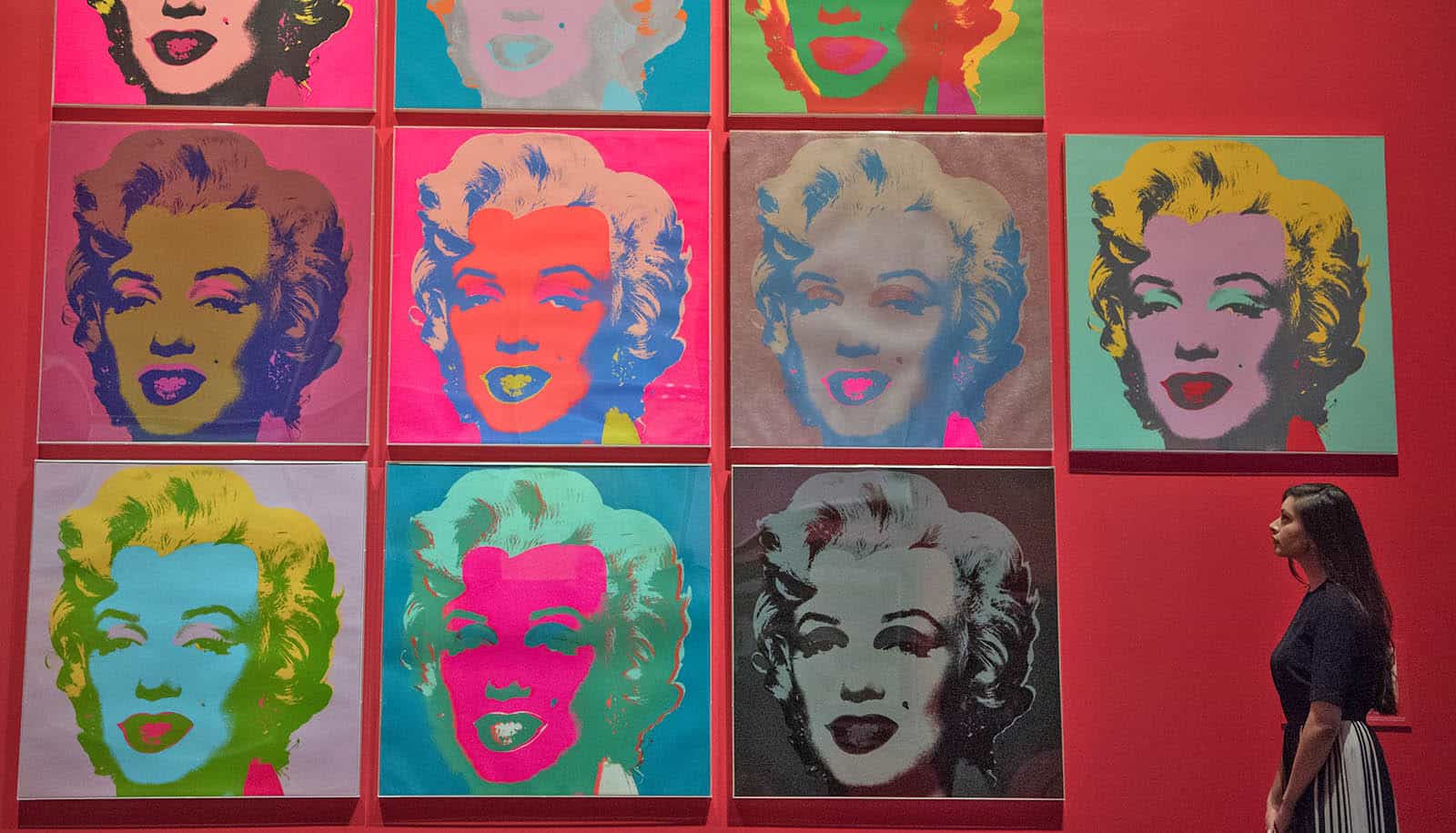In advance of the United States Supreme Court hearing of Warhol Foundation v. Goldsmith, legal expert Amy Adler examines the role of fair use in contemporary art law.
Litigation in The Andy Warhol Foundation for the Visual Arts, Inc. v. Goldsmith began in 2017, when the art foundation preemptively sued celebrity photographer Lynn Goldsmith, who alleged copyright infringement by Warhol on a portrait she took of Prince. Goldsmith photographed the musician in 1981, and licensed the black and white portrait to Vanity Fair for an article titled “PURPLE FAME” in 1984. Warhol then cropped and colored the image, and its edited version appeared in the magazine. Before Warhol passed away in 1987, he created 15 more images from that same original Prince photo.
When Prince died in 2016, Vanity Fair printed one of them, which prompted Goldsmith’s claims of copyright infringement. Much of the litigation focused on whether or not Warhol had transformed Goldsmith’s photograph to give it new meaning, which is central to the Foundation’s argument that Warhol’s design is legal under the fair use doctrine.
So what constitutes fair use? Fair use doctrine permits third parties to use copyrighted work without an owner’s permission. The work may be used for news reporting, teaching, research, and other purposes.
Under the Copyright Act, four factors are considered in determining fair use:
- the purpose and character of the use;
- the nature of the copyrighted work;
- the amount and substantiality of the portion used, and;
- the effect of the use upon the potential market for or value of the copyrighted work.
In 2019, Judge John G. Koeltl of the Federal District Court in Manhattan ruled in favor of the Warhol Foundation, saying that Warhol had adequately transformed the photograph “from a vulnerable, uncomfortable person to an iconic, larger-than-life figure.” But shortly thereafter, a panel of the US Court of Appeals for the Second Circuit in New York reversed Judge Koeltl’s ruling.
The Supreme Court has agreed to hear this dispute in its new term, which begins in October 2022. In the past, the court has deemed a work transformative if it “adds something new, with a further purpose or different character, altering the first with new expression, meaning, or message.”
Here, Adler, professor of law at New York University, talks about fair use in contemporary art law and the implications of this dispute’s elevation to the Supreme Court:
After the US Court of Appeals reversed Judge Koetl’s ruling, the Warhol Foundation argued that the ruling “casts a cloud of legal uncertainty over an entire genre of visual art” and would threaten “a sea-change in the law of copyright.” What makes this case novel?
As with so much of Warhol’s art, the paintings in this case were based on an underlying photograph taken by someone else. Here Warhol’s works were based on a photograph of the musician Prince, taken by Patricia Goldsmith, a well-known rock and roll photographer. Warhol’s traditional working method in painting and prints relied on underlying photographic images. The images of Prince at issue in this case fit into his genre of paintings based on photographs of celebrities; his most famous works in this genre are his portraits of Jackie Kennedy and Marylin Monroe. One of his Marylin Monroe paintings sold at auction this spring for $195,000,000.
At stake in the Supreme Court case is a fundamental question pivotal to contemporary art: how much can an artist build on previous work to create new work? So much creativity, not just in art but across all fields, depends on the answer to that question. The implications of this case are not just for visual art; the implications are for creativity itself. Everything is up for grabs right now.
What is fair use and why does it matter?
Fair use is a defense to copyright infringement. In this case, the Andy Warhol Foundation is arguing that Warhol copied the underlying image—of course he copied that image—but he did so for reasons that go to the very heart of why we have copyright in the first place. Copyright law exists to stimulate the production of new works, new ideas, new messages, new meanings, and new creativity. The Warhol estate argues that Warhol used Goldsmith’s copyrighted work in a way that did not violate copyright law, but instead fulfilled copyright’s very goal: to further new creativity for the benefit of the public.
It’s important to see that fair use—rather than a minor exception in copyright law—is instead at copyright’s center. It ensures that creators can create new works by building on old works, a process that is essential to creativity itself and thus to the very goal copyright exists to promote.
Fair use is also urgent because it’s one of the only two places in which the First Amendment provides a check on the limited monopoly that copyright affords to creators. The Supreme Court has explained that fair use is a First Amendment “safeguard.” The fair use check on copyright is essential to ensure that copyright functions as an “engine of free expression” rather than an obstacle to it.
Which of the four “fair use” factors do you anticipate will be the hardest part of making a ruling for the Supreme Court?
The first factor, the” purpose and character” of the use, presents a challenge. In the past twenty years, this factor, which generally turns on a determination of whether the new work “transforms” the previous work, giving it new meaning, message, purpose, or character, has generated huge amounts of litigation and legal scholarship.
When evaluating what makes an Andy Warhol painting of the musician different from Patricia Goldsmith’s photograph, we must consider the “meaning and message” of his art. Warhol’s entire body of work was an inquiry into questions about the nature of art itself, and into a world that was increasingly dominated by photography, celebrity, and pop culture. He was asking questions such as: What is the difference between pop culture and “high” art? What is the nature of photography? How should we think about originality and authorship in mediums like photography which are capable of unlimited copies? Coming on the heels of mid-century abstract expressionism in art, Warhol was destabilizing the idea of an original, authentic work of art. He was ultimately a philosopher of art, perhaps even more than an artist. This is why Warhol changed the history of art. If the point of copyright law is to promote creativity, then it seems obvious that we would want to protect an artist like Warhol.
But this presents a huge problem for courts. We certainly don’t want courts to play favorites and to value only famous artists. But there’s a deeper problem: To understand what makes Warhol’s work different from Goldsmith’s for purposes of fair use requires courts to adjudicate the “meaning and message” of art—and that is a preposterous position for courts to be in. But the danger is that if courts don’t do so or don’t find some way to find a proxy for the meaning and message of art, then art and creativity will be eviscerated. Of course Warhol was creating a new meaning and message— but how should courts understand that this is the enterprise he was engaging in and how should the Supreme Court guide lower courts. This is such a difficult line to draw, and yet drawing it is essential for copyright law and for the free speech values it promotes.
The other most prominent factor is the fourth, which examines the effect of the use upon the potential market for the copyrighted work. If the second work acts as a market substitute for the first, thus usurping demand, that weighs against a finding of fair use.
What makes this case and its elevation to the Supreme Court unique?
It’s the first time the Court has considered fair use in an artistic context in almost 30 years, when the Court explored fair use in music, and will be the first Supreme Court case addressing fair use in the visual arts. Last year the Supreme Court decided a significant case involving fair use of computer code, but the question of fair use in the visual arts has been an extraordinarily prominent and vexed problem for lower courts for years. People are holding their breath awaiting the outcome of this case. I know I’ve been holding my breath for a long time waiting for the Court to make a pronouncement here.
Several groups of art and law professors, as well as the Robert Rauschenberg Foundation, Roy Lichtenstein Foundation, and Brooklyn Museum have filed amicus briefs in support of the Warhol Foundation. What will the Supreme Court be looking for when reviewing them?
One thing foundations and museums have emphasized in their amicus briefs is that the Court must understand how important copying is to creativity in visual art. The museums want to protect artistic progress and they recognize that to do so, artists must have some room to build on, allude to, and transform works that came before them.
I also co-authored an amicus in this case, weighing in on the First Amendment implications of this decision because, as I mentioned previously, fair use embodies not just notions that are central to copyright law itself and to creativity, but also to the First Amendment. The right to express yourself sometimes requires you to draw on existing images or existing ideas. I think it’s so important for the Court to consider that fair use fulfills not only copyright values, but First Amendment ones as well. This case therefore has significant implications not only for the future of creativity, but also for free speech.
Source: NYU


